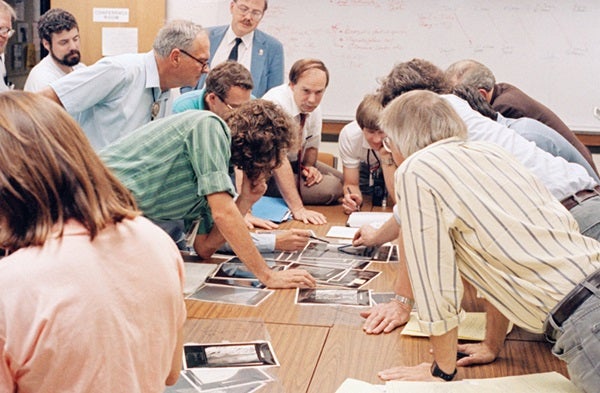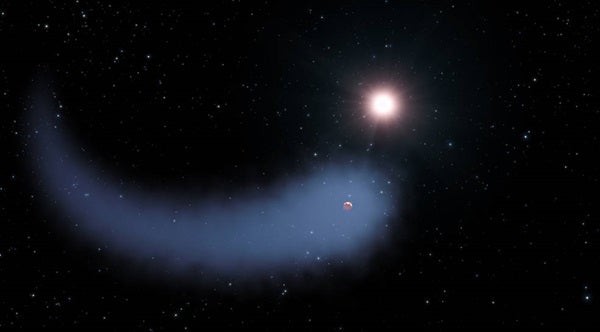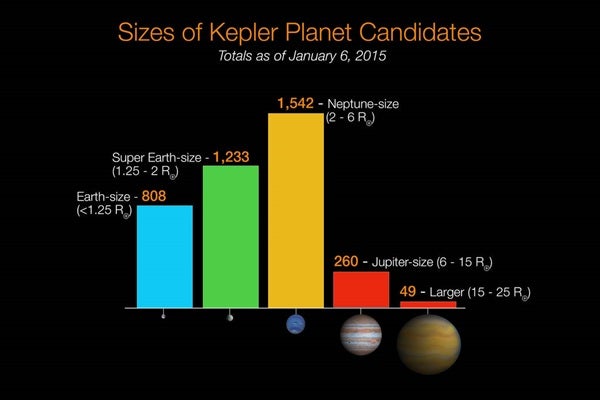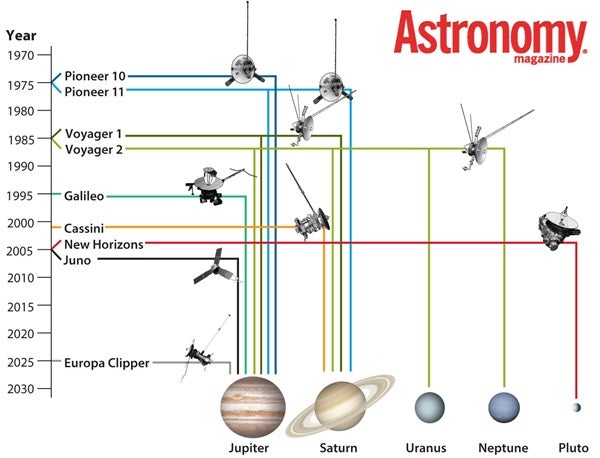By the end of this year, Hofstadter’s team will create a list of science goals for a mission to Uranus and/or Neptune, and provide the space agency with an initial game plan for what such a mission would look like. The mission will compete to be the next in NASA’s flagship class, the biggest and most expensive kind, and — if it wins — the spacecraft will fly sometime between 2023 and 2035.
In the decades since Voyager 2 made humanity’s only visit to each ice giant, these outer worlds have taken on increased significance. NASA’s Kepler space telescope has now shown Neptune-size worlds are abundant in the Milky Way. The exoplanet hunter has found roughly twice as many of these ice giants as it has Earth-sized worlds.
“One way to think of these planets would be you can take a big, rocky planet several times the size of Earth, and then put 10 Earth masses of ocean around it, and then a little bit of hydrogen and helium on top,” Hofstadter says.
Jupiter and Saturn were comparatively easy to figure out, but the data astronomers have on the ice giants is confusing and there’s not enough of it. Most information is leftover from Voyager 2.
And there are other properties that make the case for an ice giants mission. Both planets have rings and moons that are unique. For example, scientists aren’t certain what makes up Uranus’ ring particles. They’re too dark to be pure water ice like Saturn’s rings.
And Neptune’s moon Triton is the only large satellite in the solar system with a retrograde orbit — one that runs opposite from the way the planet spins. This and other evidence indicates that Triton is a captured Kuiper Belt object like Pluto. Its strange cantaloupe terrain and smokestack plumes also hint at an active world and possibly a subterranean ocean.
Currently, Hofstadter’s team is looking at a broad set of potential mission architectures. And they’ve already learned a few things even at this early stage.
“You cannot (currently) fly a single vehicle from Uranus and then to Neptune,” he says. “The planets are just not aligned properly to do that.”
Instead, his team is studying a single spacecraft that would go to one planet or the other. And they’re also exploring how they might use one rocket to send two spacecraft — one for each ice giant — something that’s never been tried before.
The mission is not dependent on the enormous Space Launch System rockets NASA is currently developing, however, the launch vehicle’s capabilities are something the team is considering.
In the coming weeks, the team will identify the top science goals for their spacecraft. And in the months after that, they’ll identify roughly 10 different potential mission architectures to meet those science goals. By fall, Hofstadter expects to report back to NASA with an initial strategy.
Whatever the final architecture, NASA’s plans to visit an ice giant should crystallize by year’s end.













